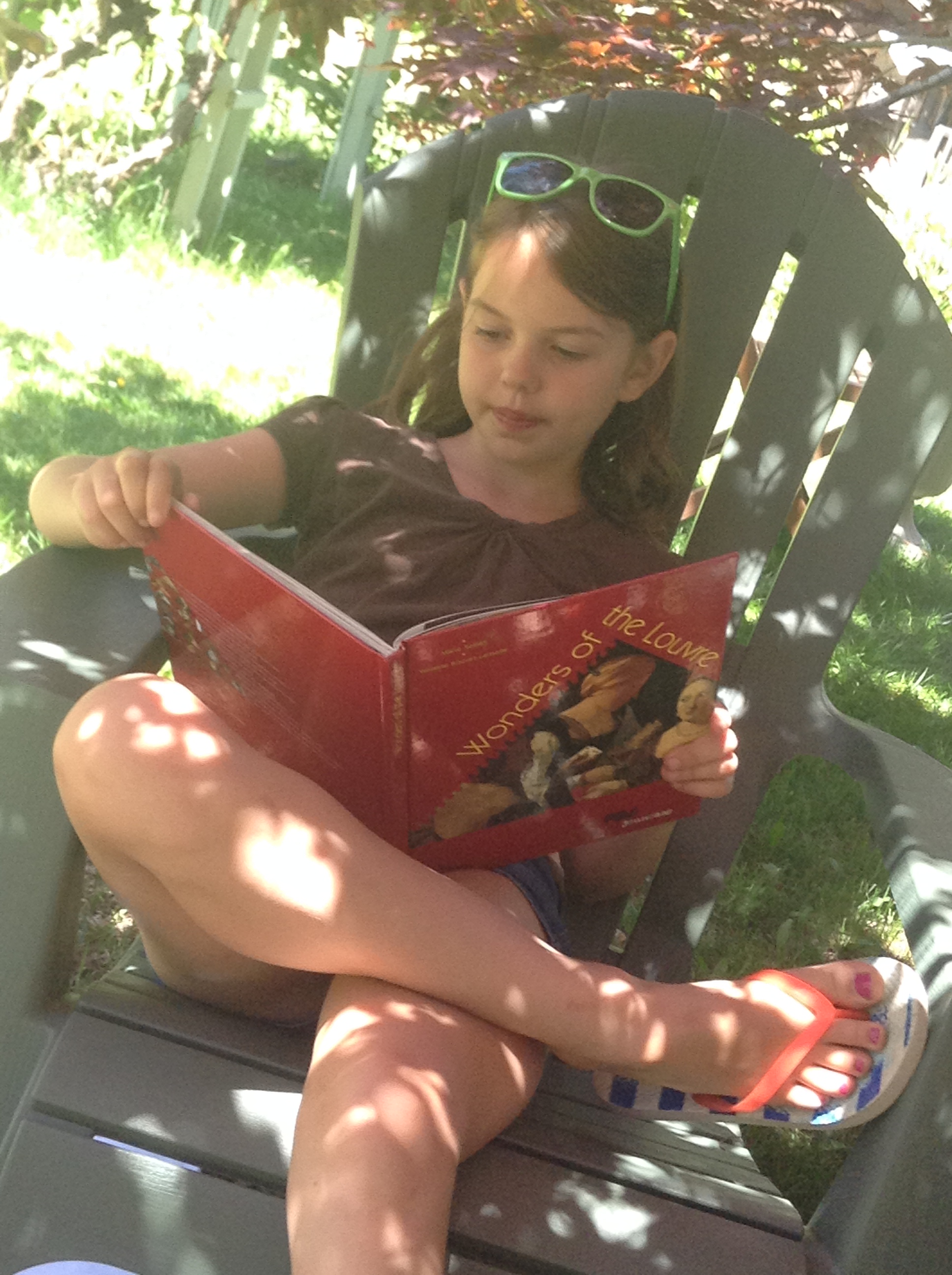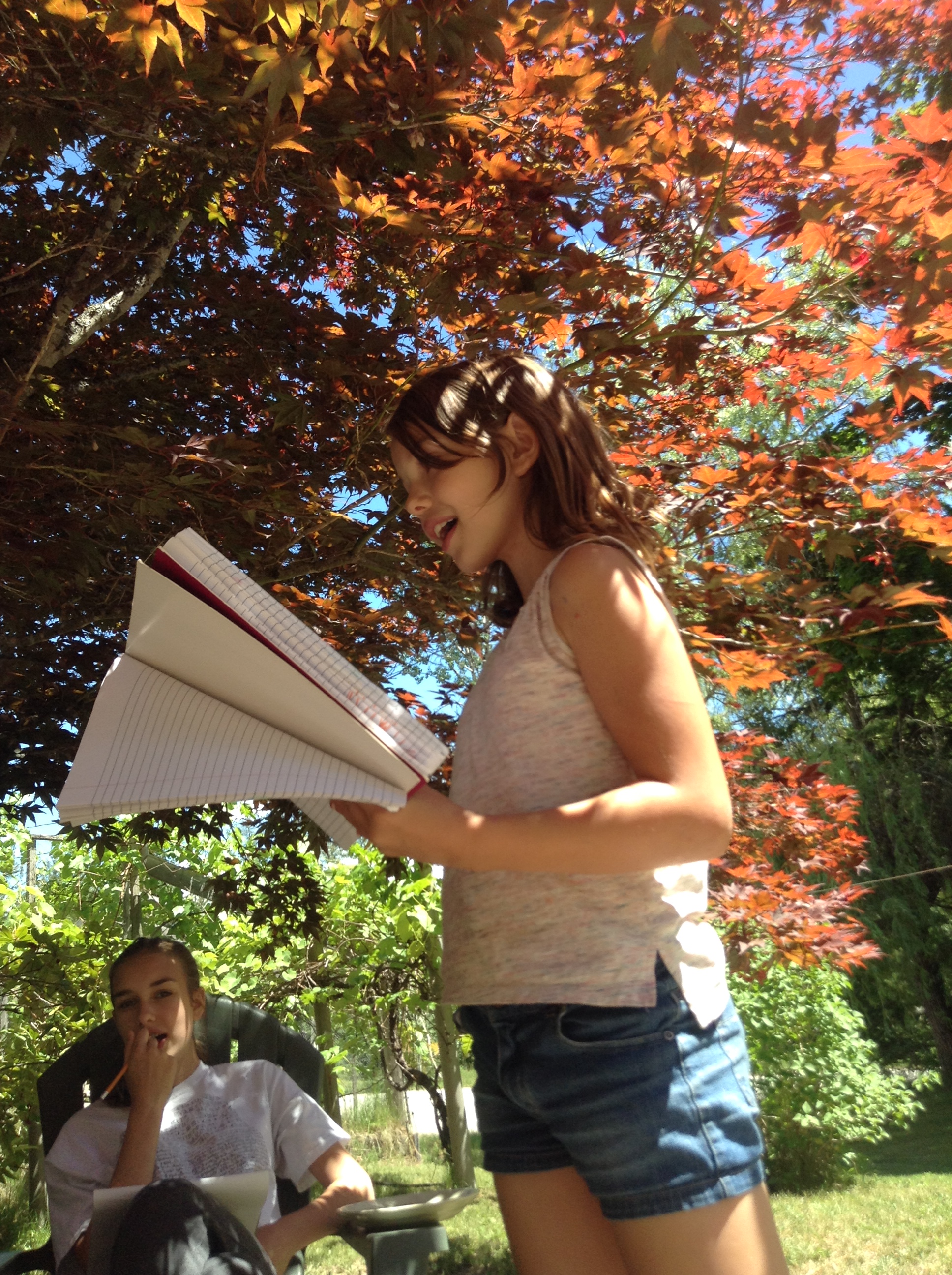I call it Art Hour.
The one hour in April to June that after lunch we sit in lawn chairs under the red maple for an introduction to my version of an abbreviated Fine Arts program.
We read from the museum art book that I purchased at the Louvre museum.
With four kids, we couldn’t wander the Louvre for a week. Scratch that, WE couldn’t wander the Louvre for a week. I could. The Louvre art book is a substitute for Art History. Presently, we’re covering Greek history. Discussing the Greek gods and their stories while perusing sculptures. Are these stories action packed! It’ll be quite some time till we reach the Impressionists, my favourite. But as we go, we don’t just look at pretty pictures, we’re covering a brief history of the world.
We read a Fable or two from Aesop’s Fables. I ask the kiddos to guess at the moral of the story.
We read from a tiny treasure of Robert Louis Stevenson. Childhood poetry at its best, with plenty of couplets as examples. Love those poems.
My Shadow
I have a little shadow that goes in and out with me,
And what can be the use of him is more than I can see.
He is very, very like me from the heels up to the head;
And I see him jump before me, when I jump into my bed.
The funniest thing about him is the way he likes to grow
Not at all like proper children, which is always very slow;
For he sometimes shoots up taller like an india-rubber ball,
And he sometimes gets so little that there’s none of him at all.
We draw the plants in our back-forty…actually, back-ten, but it’s a forest with a creek and enough thistle for daily slivers and hours of nature watching.
We write poetry together, learning the meaning of a couplet or cinquain. Six years olds writing cinquains need a little help…
 And a chance to recite our poems…
And a chance to recite our poems…
We’ll move on to Longfellow soon, which will tie in with ballad writing. This won’t be the first time we’ve read through Hiawatha. Maybe we’ll add a few country songs.
And we finish by reading from Charles and Mary Lamb’s rendition of Shakespeare stories. Presently we’re reading Much Ado About Nothing. These are clever rewrites of the real thing. Not the 1500 versions of thees and thous. Not modern language either. 1800s. So it retains the flavor we enjoy from Shakespeare. At first, the kids eyes are crossed and so many questions come at me with the first paragraph. What did he say? What is going on? But you read long enough, and the old English begins to have a form and a reason, most of the time. The best way to understand poetry and Shakespeare and old English, just read it, and read it and read it.




Lucky kids. 🙂 I want to join your school.